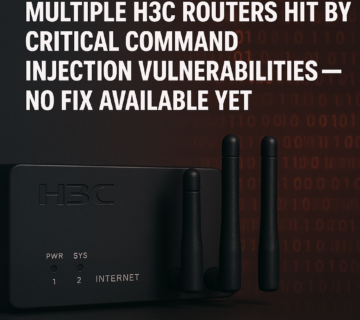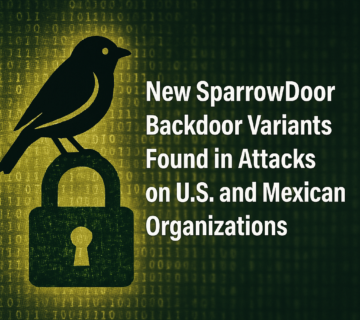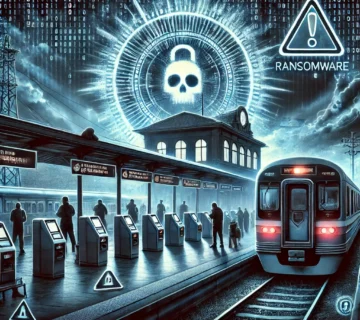New Amazon Ransomware Attack: Recovery Impossible Without Payment
🎙️ Dive Deeper with Our Podcast!
Explore the latest New Amazon Ransomware Attack: Recovery Impossible Without Payment Now with in-depth analysis.
👉 Listen to the Episode: https://technijian.com/podcast/codefinger-ransomware-targeting-aws-s3-buckets/
Subscribe: Youtube | Spotify | Amazon
Cybersecurity threats continue to evolve, and ransomware remains at the forefront of these challenges. The latest threat, Codefinger ransomware, has specifically targeted Amazon Web Services (AWS) users, leveraging innovative tactics to encrypt critical data and demand ransom for its recovery. This article delves into the specifics of this ransomware attack, its implications, and how organizations can mitigate such threats.
The Emergence of Codefinger Ransomware
Codefinger ransomware represents a new chapter in the evolution of cyberattacks. Discovered on January 13, 2025, by Halcyon threat researchers, it primarily targets AWS S3 bucket users by exploiting Server-Side Encryption with Customer-Provided Keys (SSE-C). This approach integrates directly with AWS’s encryption infrastructure, making data recovery impossible without the attacker’s key.
How Codefinger Operates
The attack sequence of Codefinger involves:
- Credential Exploitation: Hackers acquire AWS customer account credentials via phishing, password reuse, or other methods.
- Encryption Deployment: The ransomware uses AES-256 encryption via SSE-C, locking critical data.
- Urgency Tactics: Lifecycle policies are set to delete files within seven days, compelling victims to comply quickly.
- Ransom Demand: Attackers leave a note in affected directories, warning against changes to account permissions or files.
The Threat Landscape and its Severity
Halcyon researchers highlight that this attack does not exploit an inherent AWS vulnerability but takes advantage of poor credential management by users. Darren James from Specops Software emphasizes the importance of strong, unique passwords and two-factor authentication (2FA) to mitigate such threats.
Without these practices, organizations remain vulnerable, and Codefinger’s novel use of AWS encryption infrastructure poses a systemic risk to companies relying on S3 for critical data storage.
Legal and Ethical Dilemmas: Ransom Payments
Recent discussions, including plans by the U.K. government to outlaw ransomware payments, add complexity to handling such incidents. While the goal is to deter cybercriminals, several experts argue this may create unintended consequences:
- Ethical Concerns: Paying ransoms perpetuates cybercrime.
- Practical Challenges: Without a viable alternative, businesses may face financial or reputational ruin.
- Government’s Role: Experts advocate for policies that combine deterrence with comprehensive support for victims.
Expert Insights on Mitigation and Policy
- Javvad Malik (KnowBe4): Governments should focus on helping organizations prevent, detect, and recover from ransomware attacks.
- Dr. Darren Williams (BlackFog): Negotiating with criminals is fraught with risks; victims need alternative recovery mechanisms.
- Jamie Akhtar (CyberSmart): Organizations must adopt robust cybersecurity practices to reduce their reliance on paying ransoms.
Amazon’s Response to the Codefinger Attack
Amazon Web Services (AWS) has reiterated its commitment to security, emphasizing a shared responsibility model. AWS encourages users to:
- Follow best practices for identity and access management.
- Use phishing-resistant 2FA.
- Regularly rotate and protect sensitive credentials.
AWS also offers quarantine policies for exposed keys and comprehensive customer support for suspected compromises.
Preventing and Responding to Ransomware Attacks
Organizations can take several steps to minimize the risk and impact of ransomware attacks:
- Implement Strong Authentication: Use complex passwords and enable 2FA.
- Regular Backups: Maintain offline backups of critical data.
- Monitor and Audit Access: Continuously review access permissions to cloud resources.
- Employee Training: Educate staff about phishing and credential management.
- Incident Response Plan: Prepare a strategy to handle ransomware incidents effectively.
Technijian: Your Partner in Cybersecurity
At Technijian, we understand the complexity of modern cybersecurity threats like the Codefinger ransomware attack. Our expertise helps organizations safeguard their critical assets through:
- Comprehensive cloud security solutions tailored to your AWS environment.
- 24/7 threat monitoring and response services.
- Employee training programs to reduce vulnerabilities from human error.
- Assistance in developing robust incident response plans to mitigate potential damages.
Contact Technijian today to fortify your defenses against ransomware and other cyber threats.
Frequently Asked Questions (FAQs)
1. What is Codefinger ransomware?
Codefinger ransomware targets AWS S3 buckets, encrypting data through SSE-C encryption and demanding payment for the decryption key.
2. How does Codefinger differ from traditional ransomware?
Unlike traditional ransomware, Codefinger integrates with AWS’s encryption infrastructure, making recovery impossible without the attacker’s key.
3. Can I recover my data without paying the ransom?
No, due to the nature of SSE-C encryption, data recovery is impossible without the decryption key.
4. What measures can organizations take to prevent such attacks?
Organizations should use strong, unique passwords, enable 2FA, maintain offline backups, and implement robust access control policies.
5. What role does the government play in addressing ransomware threats?
Governments can create policies to deter cybercrime while supporting victims with financial assistance, decryption tools, and improved cybersecurity guidance.
6. How can Technijian help secure my AWS environment?
Technijian offers advanced cloud security solutions, threat monitoring, and employee training to protect your AWS resources and mitigate ransomware risks.
Final Thoughts
Ransomware threats like Codefinger underscore the importance of proactive security measures and robust incident response strategies. By partnering with cybersecurity experts like Technijian, organizations can stay ahead of evolving threats and ensure the safety of their critical data.


